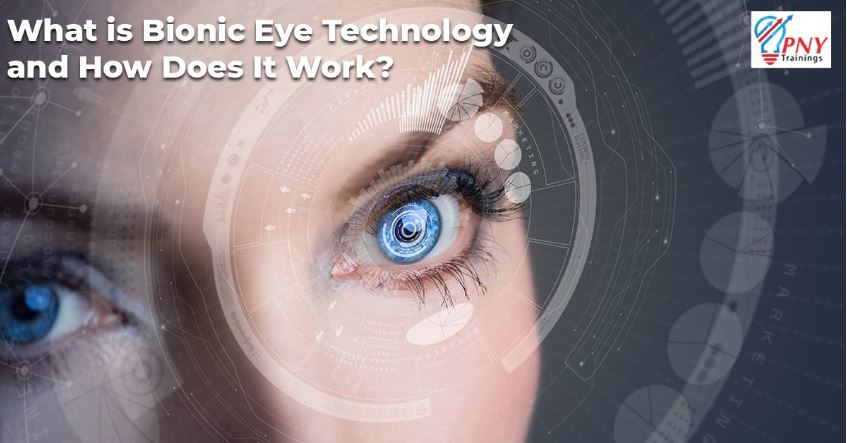
Many of us with good eyesight often take our eyesight for granted. How many of us contemplate what would happen if our vision was compromised? On the other hand, a person with poor eyesight or suffering from blindness has to deal with numerous problems in their day-to-day matters. Due to technological advancement, we experience revolutions in different areas of our life. The introduction of bionic eye technology has seemed to be a miracle for people with compromised vision. The advancement of this idea from science fiction to scientific research turning into reality is the real achievement of mankind.
According to the World Health Organisation (WHO), there are over 40 million people in the whole world who suffer from blindness while over 135 million people in the world have low vision. The question is; will the teamwork of science and technology give hope to these people? Let us have a detailed discussion.
What is Bionic Eye?
A bionic eye can be called an artificial eye that is designed to deliver visual sensations to the brain. The technology in it is designed to aid blind people to get their vision back. The bionic eye technology restores the sense of vision of its user. Since it is a bionic eye, not a human eye, it does not function similarly to the human eye by restoring full vision. It will bring back the ‘sense of vision’.
How does Bionic Eye work?
Bionic eye technology is made up of electronic systems consisting of image sensors, microprocessors, receivers, radio transmitters and retinal chips etc. A bionic eye contains a computer chip that is installed at the back of an affected person’s eye. This computer chip is then linked with a mini camera that the person wears in his glasses. As soon as the camera sees an image, it is captured and focused on the computer chip. This imagery data is then converted into electronic signals that are sent to vision processing centres of the brain and can be easily interpreted by it. As already mentioned, the bionic eye produces visual sensations, not the exact images. Therefore, these images are not super perfect but are interpretable.
Some studies have explained that the patient willing to install a bionic eye must have had eyesight in the past. The reason behind this is that the bionic eye technology does not restore vision fully, nor has it given sight to people who have never seen it before. It requires fulfilling the condition that the patient was able to see in the past which means he would have a healthy optic nerve and a developed visual cortex that is essential for the bionic eye technology to work.
What are the advantages of the Bionic Eye?
Whatever the limitations of Bionic eye technology are, we cannot undermine its advantages.
- The installation of a bionic eye is easy and there is no need to carry hefty batteries or wiring along with you.
- It can help to improve the eyesight of a person with lost vision.
- The use of technology in bionic eye design is quite efficient.
- One of the major advantages of the bionic eye includes its structure composition. It has a porous structure that allows the nutrients to flow freely.
- The implantation services of bionic eyes are easily accessible.
- The bionic eye technology is FDA approved which means there is no threat regarding its durability or other health issues.
Moreover, the additional advantages of the bionic eye also include psychological relief as the person with compromised vision gets the vision back and can see and feel independent. It helps them to recover and regain the quality of life that they once experienced before losing their vision.
Another point raised in the studies explained that people with impaired eyesight also suffer from psychological disorders including; lack of self-esteem, self-confidence, lack of social interactions and communication resulting in posttraumatic stress disorders, etc. Fears, phobias, anger, and frustration are further outcomes of the already going on suffering. Keeping in mind the above consequences, the advantages of the bionic eye can further add to the list which seems like a lifeline for a visually impaired person.
How much does a Bionic Eye cost?
As bionic eye technology comes with numerous advantages, it also has its fair share of drawbacks. One of its major drawbacks is the cost that you need to incur. The implantation is a costly treatment. Regaining sight is a blessing. The technology has taken years to develop. It is an innovative technology with a lot of techs and hard work in the backend which has made it pretty costly. The estimated cost of Bionic eye technology is approximately around $150,000 excluding all the miscellaneous expenses. Further, it restores minimal vision. It is considered quite an expensive treatment and in some countries, it is not easily accessible.
However, with time, it is estimated that this technology will be accessible and affordable. But it will take a lot of time to make this technology further innovative as well as easy to get.
Future of bionic eye technology:
Scientific researchers are striving their best to further improve bionic eye technology. Successful implantation of a bionic eye can result in wonders. A person who has lost eyesight for so long and has always dreamed of getting their eyesight back, the thought of being able to experience the vision again not only makes him feel independent but also improves his quality of life. The enhancement of technology can make this possible. This may need a lot of time and a lot of funds. Moreover, it is expected that this technology is further improved and advanced to create enhanced, sharper and colorful pictures for the visual processing center of the brain. With the mutual collaboration of technology and science, it might be possible to develop improved and further advanced bionic eye technology that will be accessible more easily and at affordable rates. Till then, let us hope for the best.







